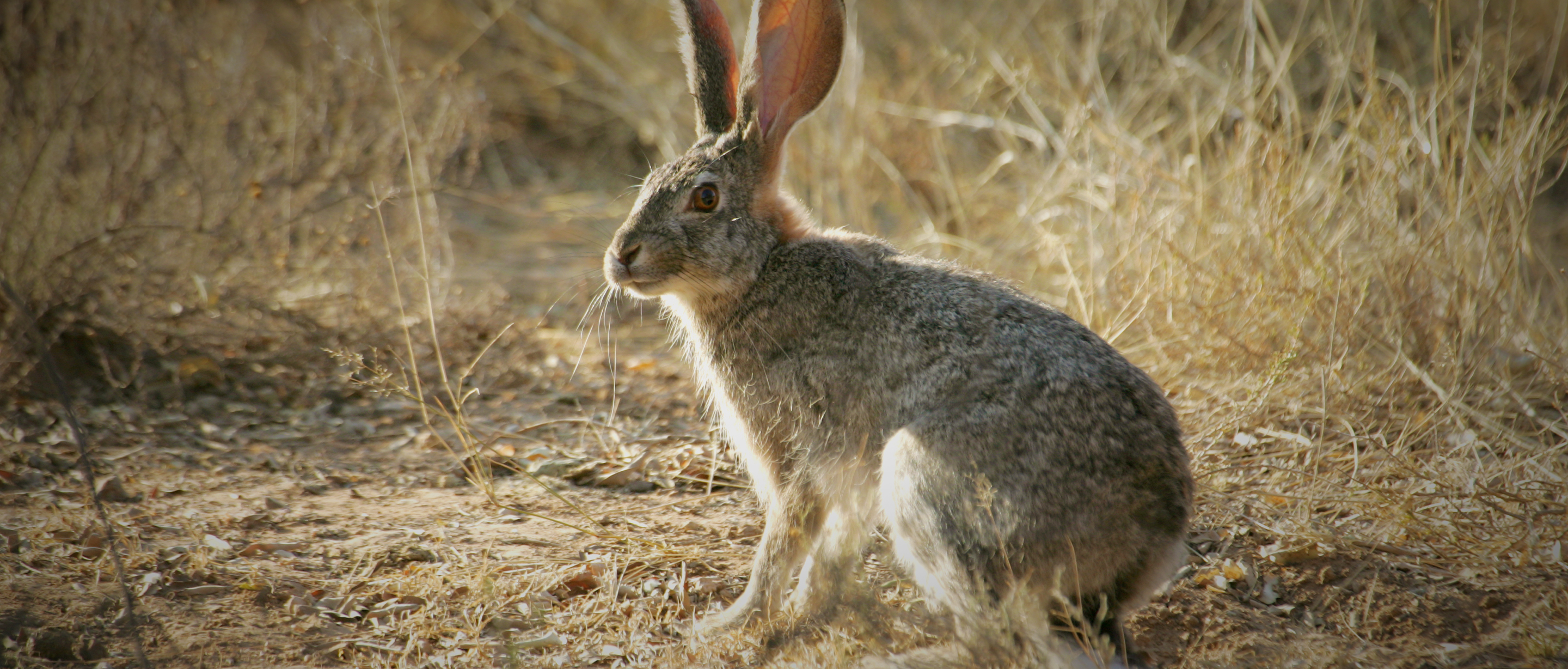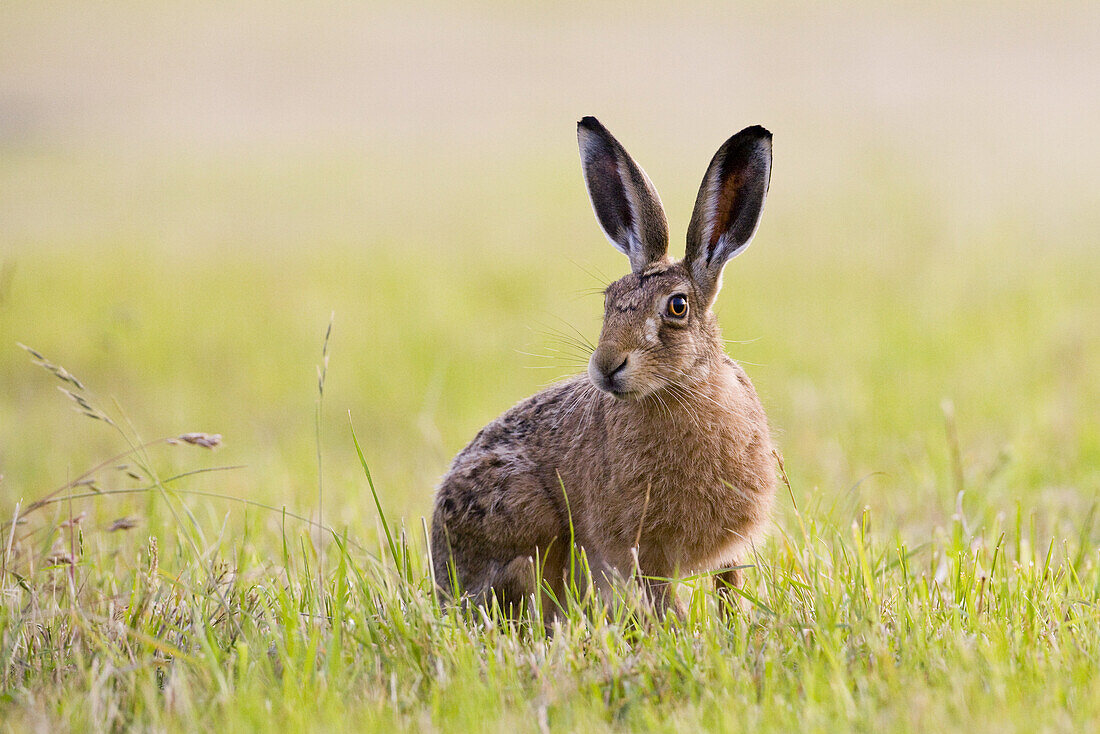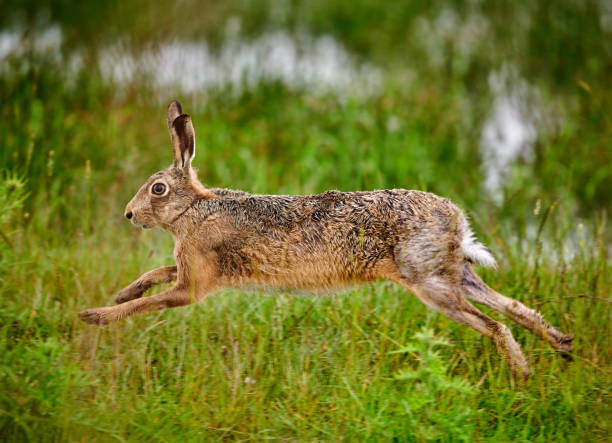Hares are animals that look like rabbits but are faster, larger, and more alert. They live in the wild and use their long legs to escape danger. Known for their speed and big ears, hares are quiet but very smart survivors.
Scientific Classification
-
Kingdom: Animalia
-
Phylum: Chordata
-
Class: Mammalia
-
Order: Lagomorpha
-
Family: Leporidae
-
Genus: Lepus
Common Names
-
Hare
-
Jackrabbit (in America)
-
African Hare
-
Snowshoe Hare (in cold places)
Geographic Distribution
Hares are found in many parts of the world including:
-
Africa
-
Europe
-
Asia
-
North and South America
They live in grasslands, savannahs, deserts, farmlands, and forests.
 Image showing a Brown hare sitting alert in a grassy field (Source: Freepik)
Image showing a Brown hare sitting alert in a grassy field (Source: Freepik)
Physical Characteristics
-
Size: 50–70 cm long
-
Weight: 2–6 kg depending on species
-
Ears: Very long, often with black tips
-
Legs: Long and strong for running
-
Tail: Small and fluffy
-
Fur: Brown, grey, or white, changes with the season in some species
Common species of Hares
1. African Savannah Hare
 Image showing an African savannah hare resting in dry bush (Source: African Wildlife Foundation)
Image showing an African savannah hare resting in dry bush (Source: African Wildlife Foundation)
Key Facts:
-
Found across Africa
-
Brown fur with white belly
-
Very fast and active at night
-
Lives in open grasslands
2. European Brown Hare
 Image showing an European hare sitting on alert in a field (Source: Image Professionals)
Image showing an European hare sitting on alert in a field (Source: Image Professionals)
Key Facts:
-
Common in Europe and parts of Asia
-
Strong back legs for running
-
Hunted by foxes and eagles
-
Lives in farmland and open countryside
3. Snowshoe Hare
 Image showing a Snowshoe hare with white winter fur running in the snow (Source: iStock)
Image showing a Snowshoe hare with white winter fur running in the snow (Source: iStock)
Key Facts:
-
Lives in Canada and northern USA
-
Changes color: brown in summer, white in winter
-
Big feet help it move on snow
-
Important prey for lynx and owls
What do Hares eat?
Hares are herbivores (plant-eaters). They eat:
-
Grass and herbs
-
Leaves and twigs
-
Bark from trees (especially in winter)
-
Farm crops (sometimes seen as pests)
They eat mostly at night (nocturnal feeders).
Fun facts about Hares
-
Hares can run up to 70 km/h to escape danger.
-
Baby hares (called leverets) are born with fur and open eyes, ready to move.
-
Hares do not dig burrows like rabbits. They rest in shallow spots called forms.
-
Hares can leap over 3 meters in a single jump.
-
They use their big ears to listen for danger from far away.
Importance to Humans
Positive Roles:
-
Help with seed spreading by eating plants
-
Part of food chain, feed wild animals
-
Symbol in many cultures (e.g., Easter Bunny is based on hares)
Challenges:
-
Sometimes eat farm crops
-
Hunted for meat and fur
-
Can carry fleas or ticks to pets/livestock
Health & common issues
Wild hares don’t visit hospitals, but pet hares and rescued ones need care.
Health Concerns:
-
Parasites (fleas, ticks, worms)
-
Injuries from traps or predators
-
Stress from loud noise or handling
-
Eye infections or dental issues
Health Tips:
-
Clean, quiet space for recovery
-
Fresh greens and clean water
-
Watch for signs of sickness (not eating, hiding too much)
Conservation Status
Most hares are not endangered, but some local populations are dropping due to:
-
Habitat loss
-
Overhunting
-
Climate change
Groups are working to protect forests and grasslands to keep hare populations strong.
Hare vs Rabbit
| Feature | Hare | Rabbit |
|---|---|---|
| Size | Bigger with longer legs | Smaller with shorter legs |
| Baby Birth | Born with fur, eyes open | Born blind, no fur |
| Home | Lives in the open | Lives in underground burrows |
| Speed | Very fast and alert | Slower and more social |
 Image showing a Hare mid-jump through grassy meadow (Source: iStock)
Image showing a Hare mid-jump through grassy meadow (Source: iStock)
If you care for rescued wild animals or small mammals, you can visit Doctor Hulk Veterinary Hospital for advice, first aid, and professional wildlife support. You can call 08143397614.


















Reviews
There are no reviews yet.